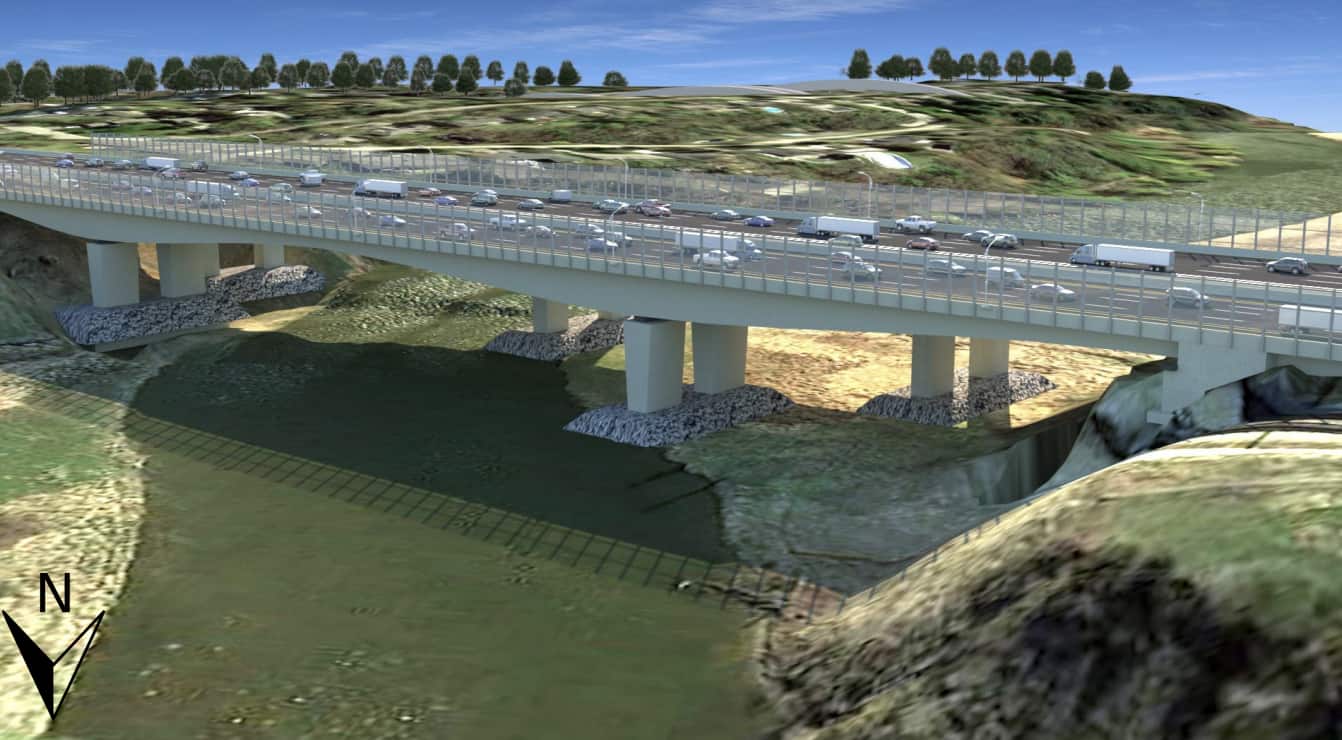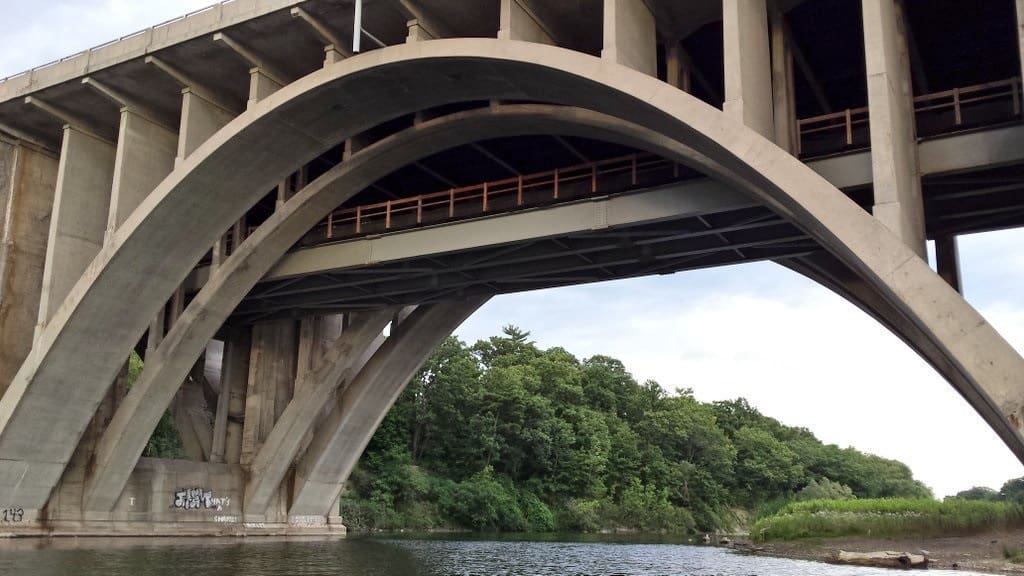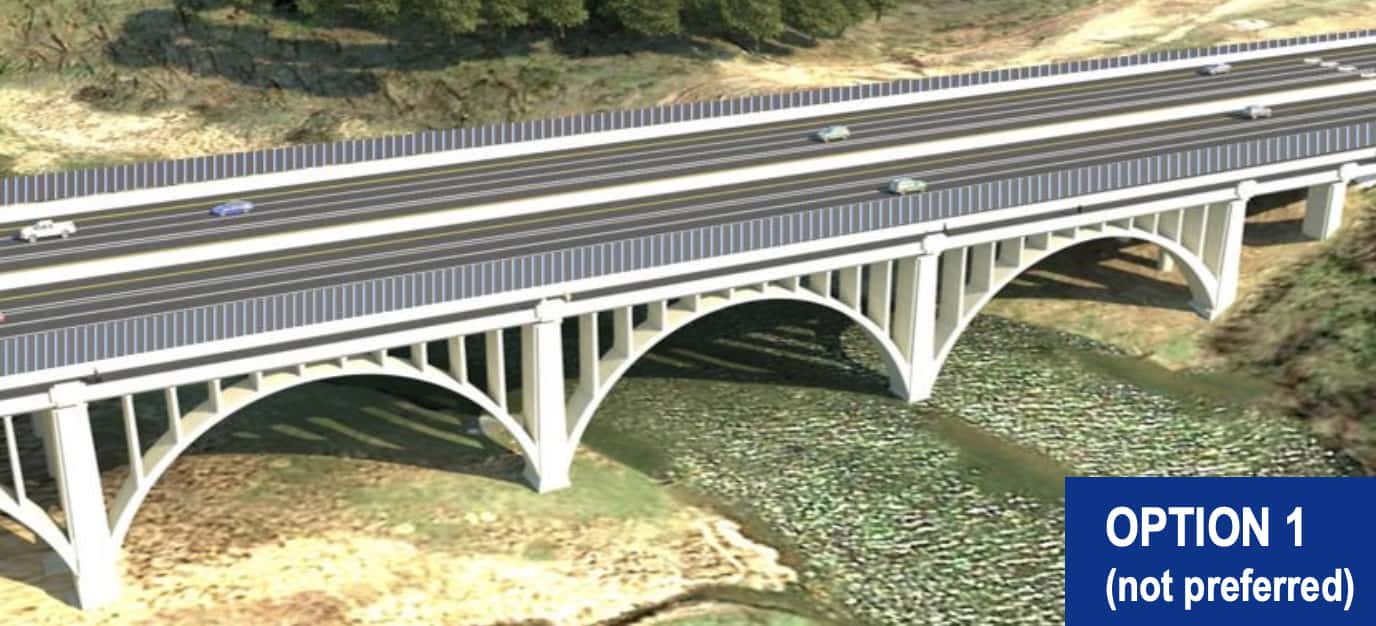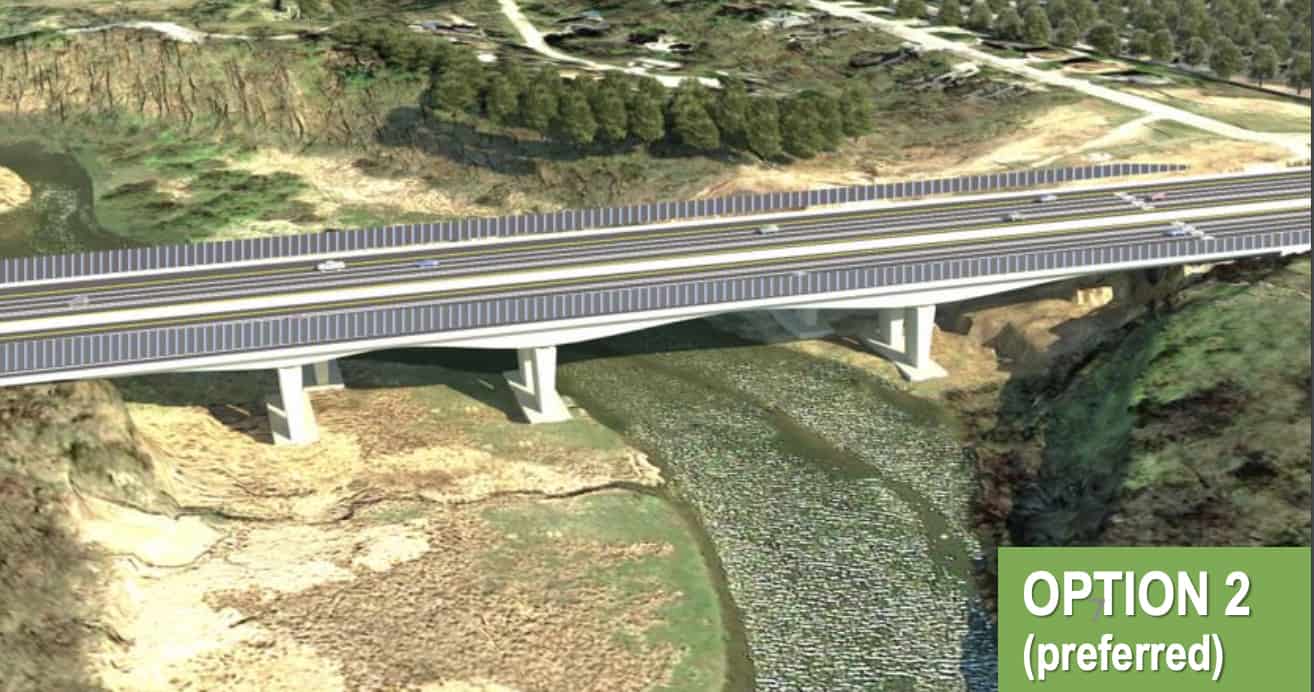Some residents and councillor furious about bridge demolition in Mississauga
Published November 19, 2019 at 8:41 pm

Some Mississauga residents (and even a city councillor) are expressing profound disappointment in the province’s decision to demolish and reconstruct a 1934 bridge that many argue has historical significance.
Recently, the Ministry of Transportation (MTO) announced that it will be demolishing and replacing the existing Queen Elizabeth Way (QEW) Credit River Bridge. The demolition is part of a plan to bring overall improvements to the QEW from west of Hurontario Street to west of Mississauga Road.
The decision to demolish the bridge was announced on Nov. 7.

Current bridge
“I attended an information session held by MTO last evening. Rehabilitation of the bridge over Credit River on Queen E no longer proposed. Tear down presented as a fait accompli. Mississauga must fight back,” Councillor Carolyn Parrish wrote on Twitter on Nov. 8.
The Town of Port Credit Association (TOPCA) has also raised concerns about the demolition and plans to make a deputation to Mississauga city council on Nov. 20. On its Facebook page, TOPCA says that after seven years of public consultations and MTO’s commitment to twin the bridge on the north side (which the MTO says the province still plans to do) and then re-deck the 1934 structure, the bridge was rated “AOK for the next 75 years.” It also says the bridge has “the highest level of provincial heritage designation.”
While the decision to demolish the bridge was made recently, the province has been making big plans for that portion of Mississauga for some time.
In 2013, MTO completed a study and decided to construct a new QEW Credit River Bridge directly to the north of the existing bridge for westbound traffic (this will proceed as planned). At the time, it said it planned to rehabilitate the existing QEW Credit River Bridge for eastbound traffic but now says that rehabilitation is no longer on the table.
“The Ministry of Transportation and Infrastructure Ontario prefer to demolish and replace the existing QEW Credit River Bridge,” the document reads.
Other proposed improvements in the 2013 plan include the reconfiguration of the Mississauga Road interchange (including the replacement of the Mississauga Road overpass), widening and rehabilitating the existing QEW and supporting facilities and features, including landscaping, utilities, drainage, stormwater management and culverts, illumination, noise walls, and an Advanced Traffic Management System (ATMS).
The province says it’s also working with the City of Mississauga to incorporate the city’s active transportation initiatives for crossings over the Credit River and the QEW, as well as multi-use trails.

Rendering of potential rehabilitated structure
MTO says that since the recently-approved environmental assessment included a rehabilitation scenario only, additional work is being carried out to assess impacts associated with the proposed demolition, conduct further consultation with agencies, municipalities, Indigenous communities and the public, identify additional environmental permitting and approval requirements and prepare and file a Transportation and Environmental Study Reportaddendum to seek approval for the replacement scenario.
TOPCA is asking those concerned about the bridge to attend the upcoming council meeting and state their views. It’s also asking people to consider making a comment on the TOPCA Facebook page so that the organization can present it.
“Years of citizen consultation went into the final design of the QEW Credit River Bridge project, and now one sudden Public Information Centre (PIC) is all that is needed to reverse course? On what basis?,” TOPCA asks on its website.
“The decision is being presented as fait accompli without supporting studies.”
In the PIC, MTO says reconstruction is recommended because of the efficiencies gained from constructing identical twin bridges, which will reduce construction duration and costs.
MTO also says that maintaining the alignment of the QEW avoids property and utility impacts.

Rendering of new bridge
The PIC document says keeping the bridge intact is not recommended, as the alignment shift required to preserve the southern line of arches results in additional environmental, property and utility impacts.
“It also introduces additional complexity and risk – jeopardizing the overall project schedule,” the PIC document reads.
Some residents have expressed dismay at the decision to rebuild the bridge.
“Sad, this is a landmark. Not the first heritage structure destroyed,” one resident wrote on TOPCA’s Facebook page.
Another poster said that while losing the bridge is disappointing, it’s inevitable.
“I agree that the heritage designation and the beauty of the bridge design should be honoured and saved, but I am also a realist and there is no way that the bridges can be expanded on both the north and south sides for either QEW ramping or for the much better purpose of Service Rd. connections, without totally hiding this majestic beauty,” another poster argued.
“Nobody would ever see its arches hidden behind any new structure on the two existing highways sidelines.”
City council will hear from residents regarding the bridge on Nov. 20.
Photos courtesy of MTO and TOPCA
INsauga's Editorial Standards and Policies








